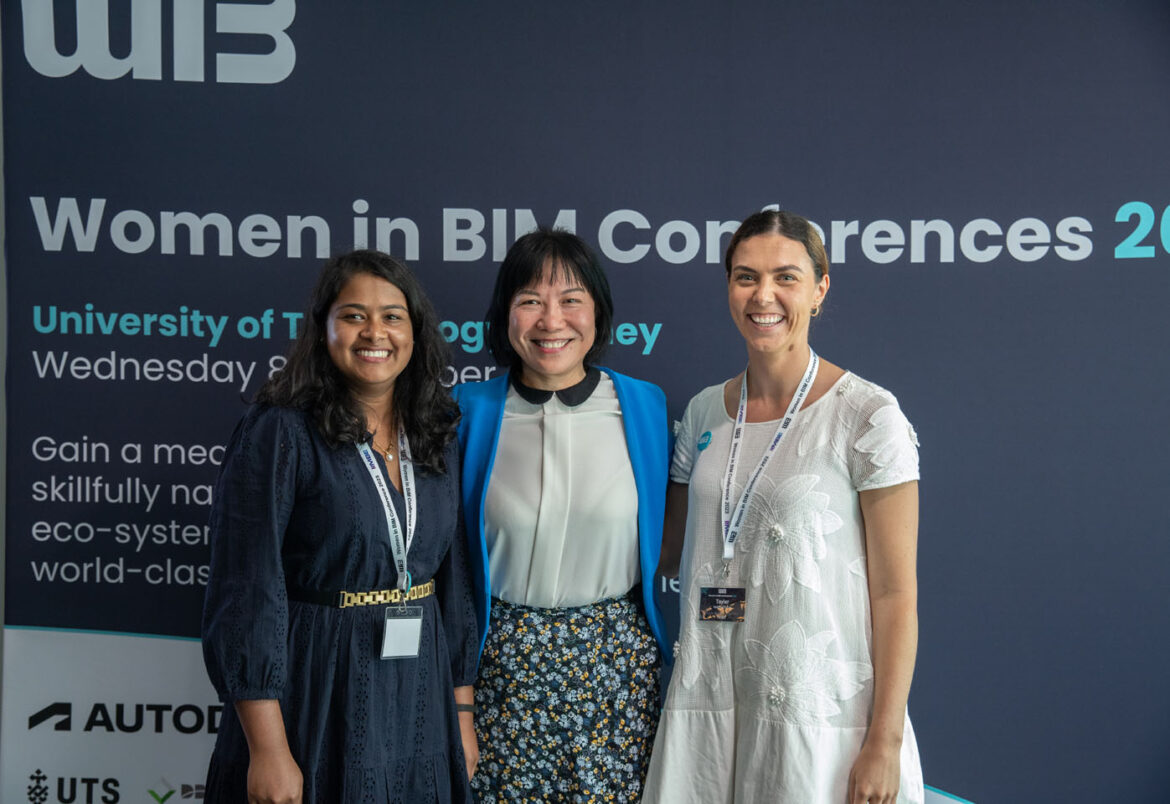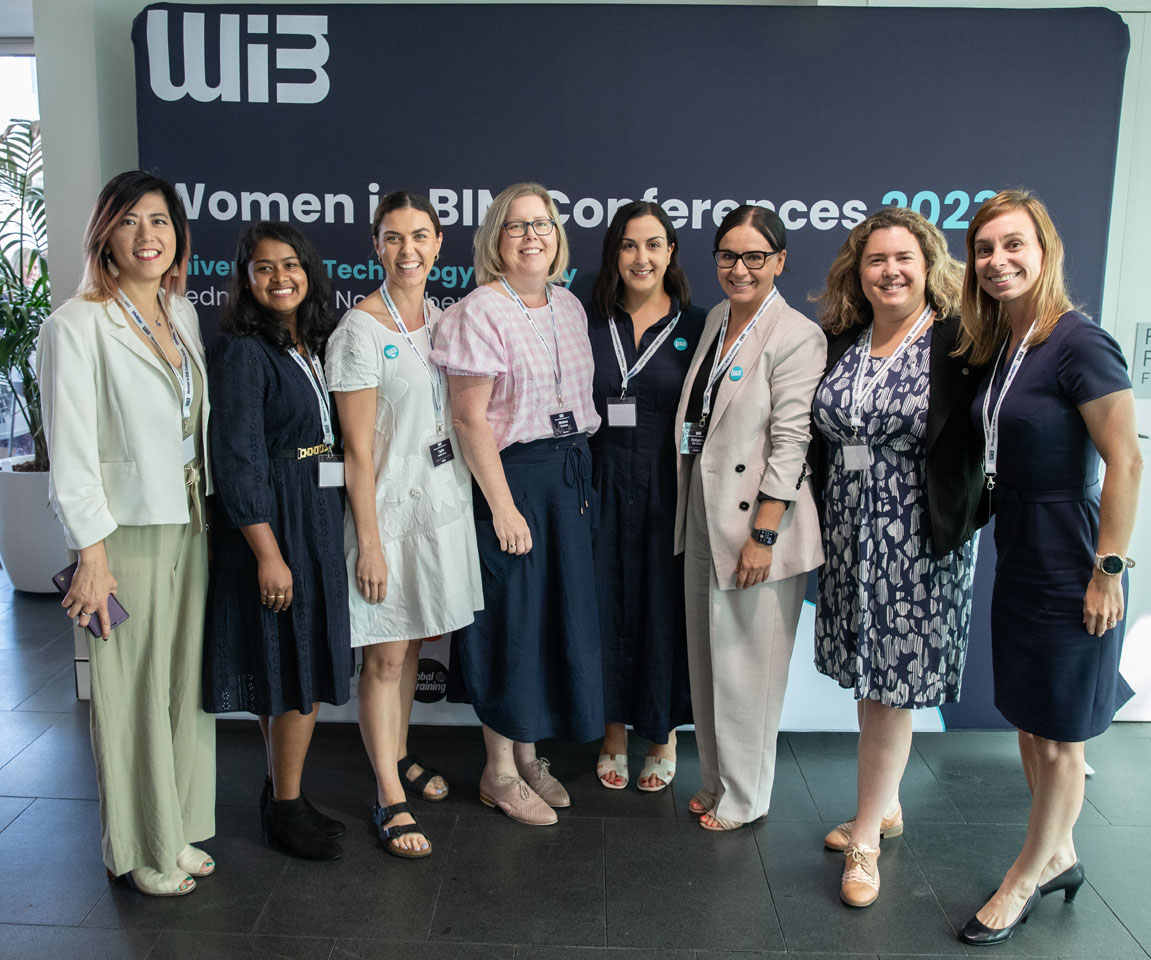
The IIMBE team recently sponsored and attended the Women in BIM conference in Sydney, a celebration of successful women in digital roles in the AEC industry throughout the world.
To gain insights into the event, we asked Digital Delivery Consultant at IIMBE and NSW Regional Lead of Women in BIM, Tayler Hubber-Davis, to share her experiences and perspectives from the day:
Q: Reflecting on the Women in BIM event, how would you describe your overall experience?
It was a really great event. It was great to connect in person with people I’d previously only met in online meetings, to catch up with Women in BIM (WIB) Regional Leads – some of whom travelled all the way from New Zealand – and to meet new faces in the WIB community. We saw an impressive turnout this year, with many more attendees than last year, as well as a diverse mix in terms of gender, career levels, and job roles. The feedback was overwhelmingly positive, with attendees appreciating the supportive and collaborative atmosphere. I’m already looking forward to the next event and am excited to witness the continued growth and success of this conference.

Q: How was the issue of the skills gap in the industry addressed?
One of the initial panels focused on bridging the skills gap in the industry. A topic that especially caught the attention of the attendees was the concept of job shadowing. This approach, suggested for employees at all levels from junior to senior, allows exploration of different roles within their company. The panellists mentioned that the duration of job shadowing can vary from a single day to a full week, depending on availability. Such a strategy offers an opportunity to discover varied interests and gain valuable insights from different professional perspectives within the industry. It also opened up the idea of exploring a different career path within your own company so that you can grow your skillsets and further understand your capabilities.
Q: Can you share some of the other main themes discussed at the event?
There was a lot of talk around AI, diversity, and digital transformation. My key takeaways were:
- Recognise your strengths and how you contribute to a team, and how others may differ.
- Understand different mindsets and how to approach change.
- Take baby steps towards long-term growth and appreciate the small wins that help build the bigger picture.
- The importance of data and how it is structured cannot be understated.
- Using the correct language fosters a better work environment.
Q: Was there a particular standout presentation at the event?
The keynote speech by Sarah Walsh (ex-Matilda’s player and Head of Women’s Football in Australia) was definitely a standout. At first, I think a lot of people were unsure about what to expect considering that Sarah works in the sporting industry and not the construction/engineering industry. But it was her ability to draw parallels between sports and construction, focusing on the challenges women face in male-dominated fields, that made it the most impactful and talked about presentation of the day.
Q: How do you see the industry evolving by 2024?
There’s a lot of discussion in the industry currently about AI and data. The mindset has shifted from viewing digital or BIM as a temporary trend to recognising it as a vital component everyone wants to integrate. The key focus now is on how we can effectively utilise and structure data for meaningful outcomes. Numerous tools are emerging to help us, but the real challenge lies in educating ourselves on how to use this information effectively, not just for the sake of saying ‘we’re utilising AI’.
Q. Regarding the role of women in this evolving industry, what’s the focus for WIB for the near future?
The primary goal of Women in BIM (WIB) is to support and develop women in BIM-related roles, ensuring their retention and growth in the industry. This naturally leads to the topic of mentorship and how WIB is fostering this initiative.
Looking forward, I envision clearer career pathways for those starting in their careers, as well as effective succession planning in BIM. We aim to assist those transitioning from other roles into BIM, particularly focusing on the advancement of female seniors in BIM positions. Enhancing skills and knowledge in areas such as AI and data structuring is crucial. To this end, WIB plans to organise more conferences and networking events, creating opportunities to further develop these essential skills.

Q: Can you tell us about your personal journey with the WIB mentorship program?
This year, I’ve actually taken on a mentor role, which is a completely new experience for me. Initially, I was hesitant, as I wasn’t sure whether I was ready to mentor someone. But I’ve found it incredibly rewarding to connect with others and I’m learning a lot from the mentees.
The mentorship programme is something that is good for everyone no matter their career level. Statistically, women are underrepresented in the industry, so the mentor scheme is there to help support and retain women in the industry, and to help women build confidence to become leaders.
It’s funny; like I said, I was initially apprehensive about becoming a mentor, but at the WIB Conference, I met several people who were interested in getting involved but unsure if it was the right fit for them. After sharing my experiences, they became enthusiastic about signing up next year, both as mentors and mentees.
Q: In conclusion, how would you summarise the impact of the Women in BIM event?
The Women in BIM event was more than just another conference; it’s a catalyst for change in the industry. It highlighted the essential role of women in fostering innovation and collaboration within BIM, paving the way for a future that’s both exciting and inclusive. The range of insights and experiences shared at the event didn’t just mirror the current state of the industry; they’re actively shaping its future direction.